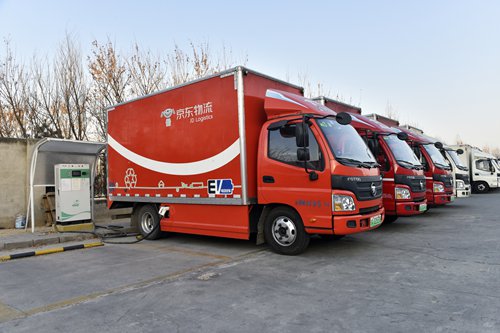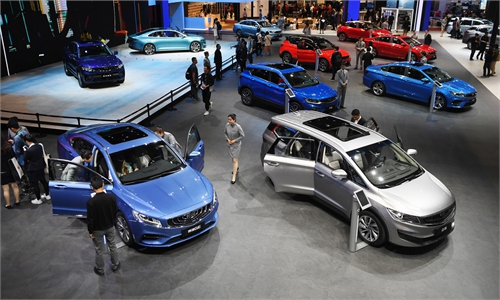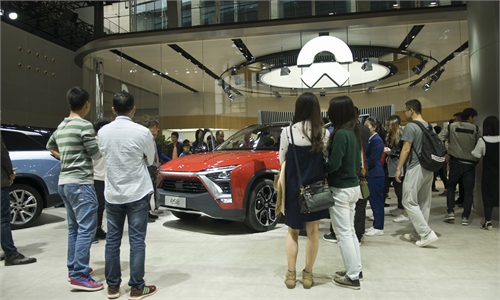
Electric delivery vehicles at a new energy vehicle (NEV) charging station in Shunyi district, Beijing on Sunday. The station, also the largest public NEV charging station in the district, opened on Sunday. The station has 25 charging facilities, which can charge up to 78 electric vehicles at the same time. Photo: IC
South China's Hainan Province released a plan saying that it would popularize 25,000 new-energy vehicles (NEVs) in 2021, including using NEVs to replace old government cars.
This is another example of local government effort to popularize NEVs as China is striving to full its target of making NEV sales around 20 percent of its overall NEV sales by the end of 2025.
According to the aforementioned plan, except for special use vehicles, all new government cars or official cars replacing old ones in Hainan must be "one hundred percent" NEVs.
All ride-hailing cars must also be clean energy automobiles, the government required.
Besides, the province will make sure that all newly added public vehicles or those replacing old ones will be NEVs. Exceptions are allowed for certain emergency vehicles or those with special function demands which can't be done by NEVs.
Apart from purchasing NEVs for government and public uses, the province will also explore the model of NEV "rent to own," where NEVs will be rent instead of sold.
Feng Shiming, a veteran car industry analyst, said that Hainan's moves are "setting a good example" for government-led NEV promotions, which he said would likely be replicatedby other regions.
"Hainan is not home to any large local NEV companies, so I think the policies will benefit NEV sellers, especially high-end brands, including BYD and Tesla," he told the Global Times.
According to Feng, some government cars have a fixed route, such as delivery vehicles, which are especially suited to use NEV models. In comparison, the number of such NEV government cars will be limited, and the most prominent effect of such policies will be on China's ride-hailing car industry.
"As far as I know, a large proportion of WM Motor (Chinese NEV brand) sales comes from ride-hailing cars in Hainan. If the government takes the lead in promoting NEVs in ride-hailing market, it will be a big boost to the industry," Feng said.
Hainan's efforts to promote NEV come at a time when China is striving to achieve an ambitious goal of replacing environment unfriendly combustion vehicles with NEV cars.
Some other provinces have alreadyacted. East China's Jiangsu, for example, popularized 55,000 NEVs in 2020, up 358 percent compared with 2015, according to media reports.
Data from consulting firm Canalys showed that China sold 1.3 million electric cars in 2020, up 8 percent year-on-year and accounting for 41 percent of the world's entire electric car sales. It also predicted that China would be able to sell 1.9 million electric cars in 2021, recording stunning growth of 51 percent year on year.
However, Feng said that it would not be easy for China to achieve the 20 percent NEV goal, which means China's NEV sales should grow by around 30 percent annually in the next five years.
"China's population base is shrinking, and the income of young generation is not growing. Should China become more like Japan, the momentum for car purchasing will slow down," he said.
However, he said possibility still exists for China to make it happen, if China encourages innovation and new transportation modes, including ride hailing.



